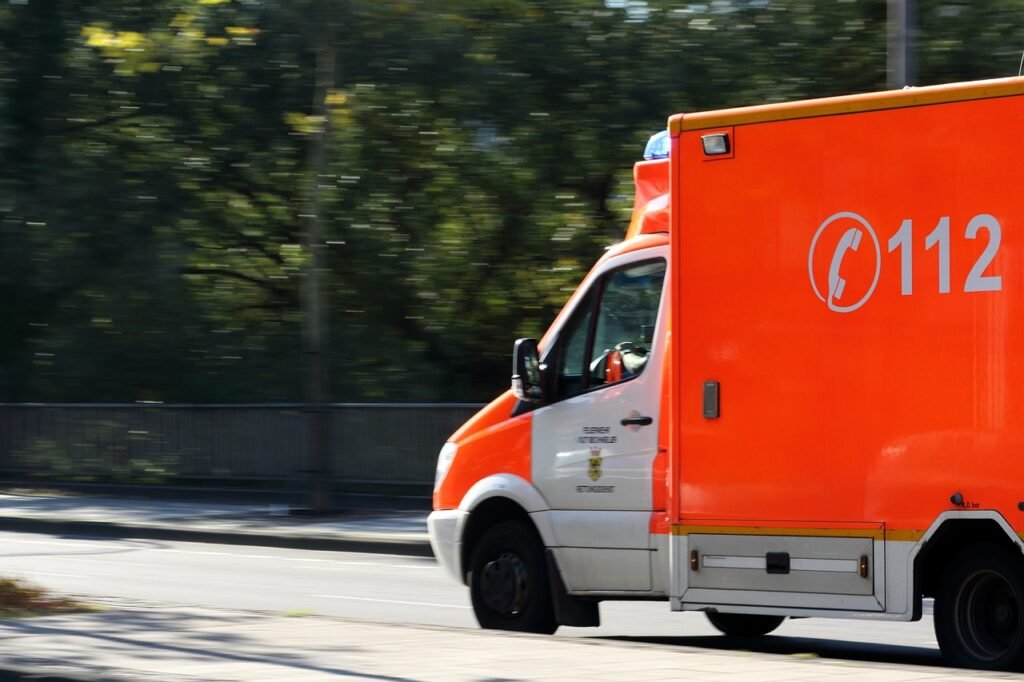In a world that is unpredictable and full of uncertainties, it is essential for everyone to be equipped with the knowledge and skills necessary to respond effectively in times of crisis. “Crisis Response: Mastering First Aid” is a comprehensive article that emphasizes the importance of first aid training and its role in emergency situations. Whether it is a minor injury or a life-threatening incident, this article will guide you through the fundamentals of first aid, empowering you to be a calm and confident responder in any crisis. Get ready to learn the essential techniques that could make a significant difference in saving lives.

This image is property of pixabay.com.
Check out our Product Reviews
Understanding the Importance of First Aid Training
In the midst of an emergency situation, every second counts. The ability to provide immediate and effective first aid can make a remarkable difference in the outcome. First aid training equips you with the knowledge and skills necessary to save lives during critical moments. By understanding the importance of first aid training, you can become a valuable asset in any emergency situation.
Saving Lives in Emergency Situations
During emergencies, every passing moment can be crucial. Through first aid training, you gain the ability to assess the situation and provide immediate care. From performing CPR to controlling severe bleeding, these life-saving techniques can mean the difference between life and death. Being able to respond quickly and confidently can significantly increase the chances of survival for the injured or ill individual.
Minimizing the Severity of Injuries
First aid training not only saves lives, but it also helps to minimize the severity of injuries. By providing immediate care, you can prevent injuries from worsening and potentially causing long-term damage. Techniques such as stabilizing fractures or applying pressure to stop bleeding can make a significant impact on the overall recovery process. With first aid training, you become a vital link in the chain of care, ensuring that injuries are properly managed until professional help arrives.
Promoting a Sense of Preparedness
Knowing how to respond in emergencies instills a sense of preparedness. When you undergo first aid training, you gain the confidence to take control of situations that would otherwise be overwhelming. This confidence extends beyond emergencies and can be applied to everyday life. From minor cuts and burns to more severe incidents, having the knowledge and skills to provide immediate care helps create a safer environment for both yourself and others.
Preventing Complications and Fatalities
Prompt and proper first aid can significantly reduce the risk of complications and fatalities. By intervening early, you can prevent injuries or illnesses from escalating into life-threatening situations. For example, effectively managing shock or administering Epinephrine for severe allergic reactions can prevent further complications and potentially save a life. When equipped with first aid training, you become a crucial first responder who can mitigate the risks associated with emergencies.
Key Principles of First Aid
When providing first aid, several key principles should be kept in mind to ensure the best possible outcome for the injured or ill individual. These principles serve as a guide to effective and efficient care.
Assessing the Situation
Before jumping into action, it is essential to assess the situation. Take a moment to evaluate the environment, determine potential hazards, and identify any immediate dangers. By understanding the context of the emergency, you can make informed decisions and provide appropriate care.
Ensuring Personal Safety
While providing first aid, it is vital to prioritize personal safety. Assess the risks involved and take necessary precautions to protect yourself and others from harm. Whether it means wearing gloves or utilizing barrier devices, taking measures to ensure personal safety is essential when dealing with emergencies.
Activating Emergency Services
In more severe emergencies, it is crucial to activate emergency services as soon as possible. Dial the appropriate emergency number and provide them with accurate and concise information regarding the situation. Activating emergency services not only ensures professional help is on the way but also allows you to focus on providing immediate care without delay.
Providing Initial Stabilization
Upon assessing the situation and ensuring personal safety, the next step in providing first aid is to provide initial stabilization. This may involve immobilizing a fractured limb or controlling bleeding through direct pressure. By stabilizing the injured area, you can minimize further damage and provide relief to the individual while awaiting professional medical assistance.
Offering Comfort and Reassurance
In addition to providing physical care, offering comfort and reassurance to the injured or ill individual is crucial. By maintaining a calm and empathetic demeanor, you can help alleviate their anxiety and instill a sense of trust. Simple acts like holding their hand, speaking in a soothing tone, and providing words of encouragement can make a significant difference in their overall well-being.
Check out our Product Reviews
Key Skills Every First Aid Responder Should Master
To become an effective first aid responder, there are several key skills that should be mastered. These skills form the foundation of providing immediate and appropriate care in emergency situations.
CPR (Cardiopulmonary Resuscitation)
Cardiopulmonary resuscitation, commonly known as CPR, is a vital skill that every first aid responder should master. CPR involves providing chest compressions and rescue breaths to an individual who has experienced cardiac arrest. By maintaining circulation and oxygenation, CPR can help sustain life until advanced medical help arrives.
Choking Relief Techniques
Choking is a life-threatening emergency that requires immediate intervention. First aid responders should be trained in techniques such as the Heimlich maneuver to dislodge the obstruction and restore the person’s ability to breathe. Being proficient in these techniques can save lives in situations where every second counts.
Controlling Severe Bleeding
In emergencies involving severe bleeding, knowing how to control it is crucial. First aid responders should be able to apply direct pressure, use elevation techniques, or utilize appropriate dressings to stop the bleeding. By effectively managing severe bleeding, you can prevent further complications and help stabilize the individual’s condition.
Administering Epinephrine and Antihistamines for Severe Allergic Reactions
Severe allergic reactions, such as anaphylaxis, can be life-threatening if not immediately addressed. First aid responders should be trained in administering Epinephrine and antihistamines to help alleviate the symptoms and potentially save a life. These interventions can buy valuable time until advanced medical help arrives.
Managing Shock
Shock is a critical condition that can occur in various emergency situations. First aid responders should be able to recognize the signs and symptoms of shock and take appropriate actions to manage it. This may involve keeping the person lying down, elevating their legs, and providing blankets to maintain body heat. By effectively managing shock, you can help stabilize the individual’s condition and improve their chances of recovery.
Step-by-Step Guide to Administer First Aid
Providing first aid requires a systematic approach to ensure that no crucial steps are missed. By following a step-by-step guide, you can confidently administer care and improve the outcomes of emergencies.
Assessing the Situation and Calling for Help
Upon encountering an emergency, quickly assess the situation and determine the appropriate course of action. Activate emergency services if necessary and provide them with vital information regarding the situation.
Performing Primary Survey and Assessing Consciousness
Performing a primary survey involves assessing the person’s consciousness and checking for any immediate life-threatening conditions. This includes checking for responsiveness, evaluating the person’s airway, and assessing breathing and circulation. Ensure you have a clear understanding of the person’s condition before proceeding with further care.
Opening and Maintaining the Airway
If the person is unresponsive, it is crucial to open and maintain their airway. Tilt their head back and lift their chin to prevent any obstructions. This allows for proper breathing and helps ensure adequate oxygenation.
Checking Breathing and Performing Rescue Breathing
If the person is not breathing or is experiencing difficulty breathing, it is essential to provide rescue breaths. Pinch their nose shut, make a seal over their mouth, and give two rescue breaths. This helps supply oxygen to the person’s lungs and improves their chances of survival.
Preventing Further Injury and Monitoring Vital Signs
Once the person’s airway and breathing are secured, focus on preventing further injury and monitoring their vital signs. Immobilize any suspected fractures, control bleeding, and constantly assess their pulse and breathing. These ongoing assessments are crucial in determining the person’s condition and guiding the next course of action.
Providing Specialized Care
In certain emergencies, specialized care may be required. This may involve administering medication, such as Epinephrine for severe allergic reactions, or providing specific interventions based on the person’s condition. It is important to receive proper training and follow established protocols when providing specialized care.

This image is property of pixabay.com.
Handling Common Emergencies
While emergencies can vary greatly, there are several common scenarios that first aid responders may encounter. By being prepared for these situations, you can effectively provide immediate care and improve the outcomes for those in need.
Minor Cuts and Burns
Minor cuts and burns are common occurrences that can often be managed with basic first aid. Clean the wound thoroughly, apply a sterile dressing, and watch for signs of infection. For minor burns, run cool water over the affected area and cover it with a clean cloth or dressing. By promptly attending to these injuries, you can prevent complications and promote quicker healing.
Sprains and Strains
Sprains and strains commonly occur during physical activities or accidents. Provide R.I.C.E. (Rest, Ice, Compression, Elevation) to the affected area to reduce swelling and minimize pain. Applying a cold pack, wrapping the area with a compression bandage, and elevating the limb can help promote healing and alleviate discomfort.
Heat Exhaustion and Heatstroke
In hot environments, heat exhaustion and heatstroke can pose significant risks. Move the affected person to a cooler area and provide them with fluids to rehydrate. Apply cool compresses to their body and fan them to help regulate their body temperature. Heatstroke is a medical emergency, and immediate medical attention should be sought.
Heart Attacks and Cardiac Arrests
Heart attacks and cardiac arrests require immediate action to enhance the chances of survival. Call emergency services and begin CPR if the person becomes unresponsive and shows no signs of breathing or circulation. The application of an automated external defibrillator (AED) can significantly increase their chances of survival.
Broken Bones
Broken bones can result from accidents, falls, or physical trauma. Support the injured area, immobilize it using splints or slings, and seek medical attention. Avoid moving the person unnecessarily, as this can worsen their condition.
Seizures
During a seizure, it is essential to maintain the person’s safety and protect them from further harm. Clear the area of potential hazards and place something soft under their head if possible. Do not restrain the person during the seizure, and monitor the duration and characteristics of the seizure. Seek medical advice and assistance if necessary.
Special Considerations for Specific Age Groups
Different age groups may have specific needs and considerations when it comes to first aid. Understanding these differences can help ensure appropriate care is provided to individuals of all ages.
Infants and Children
Infants and children require special attention and care when it comes to first aid. Their anatomy and physiology differ from adults, and age-appropriate techniques should be used. It is important to be aware of common injuries and illnesses that occur in this age group, such as choking, falls, and febrile seizures.
Pregnant Women
Pregnant women may require additional considerations when providing first aid. Certain interventions or medications may be contraindicated, and care should be taken to minimize any additional stress or harm to both the mother and the baby. Being familiar with pregnancy-specific emergencies, such as preeclampsia or premature labor, is crucial in providing appropriate care.
Elderly Individuals
Elderly individuals may have pre-existing medical conditions or age-related vulnerabilities that impact their response to first aid. Understanding common health concerns in the elderly, such as heart disease or respiratory conditions, can help first aid responders provide appropriate care. Special care should be taken to ensure their physical comfort and emotional well-being during emergencies.

This image is property of pixabay.com.
Maintaining Composure in Crisis Situations
Staying calm and composed is essential for effective first aid response. By maintaining a level-headed approach, you can ensure that the best care is provided to the injured or ill individual.
Keeping Calm and Avoiding Panic
It is natural to feel an initial surge of panic in emergency situations. However, it is crucial to stay calm and composed. Panic can hinder proper decision-making and impede the ability to provide effective care. Take a deep breath, remind yourself of your training, and focus on the task at hand.
Communicating Clearly
Clear communication is key in emergency situations to ensure that everyone involved understands the situation and the necessary actions. Speak calmly and assertively, using simple and concise instructions. Avoid using medical jargon and ensure that your message is understood by both the injured individual and any bystanders.
Being Empathetic and Supportive
While remaining focused on providing care, it is important to show empathy and support to the injured or ill person. Understand that they may be frightened or in pain, and offer reassurance and comfort. Your presence and support can greatly alleviate their distress and build trust.
Prioritizing Tasks
In crisis situations, it is essential to prioritize tasks based on urgency and severity. Focus on addressing immediate life-threatening conditions first before moving on to less critical concerns. This ensures that the most critical interventions are given the attention they require, maximizing the chances of a positive outcome.
Training Resources and Certification Programs
To become proficient in first aid, it is important to seek out appropriate training resources and certification programs. These resources provide the necessary knowledge and skills to effectively respond to emergencies.
Local Red Cross Training Centers
The Red Cross offers comprehensive first aid training programs at their local training centers. These programs cover a wide range of topics and provide hands-on experience in various emergency scenarios. Training at a reputable institution like the Red Cross ensures that you receive up-to-date and accurate information.
Online First Aid Courses
Online first aid courses provide a flexible and accessible option for individuals looking to gain basic first aid knowledge. These courses often include modules with interactive quizzes, videos, and instructional materials. While they may not provide hands-on practice, they can be an excellent starting point for learning the fundamentals of first aid.
Certification Levels and Renewal
First aid certification programs typically offer different levels of certification based on the depth of knowledge and skills acquired. These levels often include basic first aid, CPR, and advanced first aid courses. Certification requires successful completion of the training program and passing a practical examination. It is important to note that certifications have an expiration date, and renewal may require periodic refresher courses or assessments to ensure ongoing competency.
First Aid Kits and Essential Supplies
Having a well-stocked first aid kit is essential for timely and effective emergency response. Basic supplies for every first aid kit include:
- Adhesive bandages
- Gauze pads
- Adhesive tape
- Antiseptic wipes
- Tweezers
- Scissors
- Disposable gloves
- Cold packs
- Pain relievers
- A CPR breathing barrier
Besides these basics, additional items may be needed for specialized kits catering to specific environments, such as camping or outdoor activities, or specific medical conditions, such as allergies. It is important to regularly inspect and restock your first aid kit to ensure that all supplies are in good condition and not expired.
Practice, Review, and Regular Refresher Courses
Mastering first aid requires practice and regular review of knowledge and skills. By engaging in regular refresher courses and simulation scenarios, you can maintain your competency as a first aid responder.
Creating Realistic Simulation Scenarios
Simulation scenarios provide a hands-on opportunity to practice first aid skills in a controlled environment. By creating realistic scenarios, you can test your knowledge and skills and identify areas for improvement. This helps build confidence and prepares you for real-life emergencies.
Periodic Skill Assessments
Periodic skill assessments are crucial in maintaining competency. These assessments can be conducted through practical exams or by participating in skill-based workshops. By regularly assessing your skills, you can identify any gaps in knowledge or areas that require further practice.
Staying Updated with Latest Guidelines
First aid guidelines are constantly evolving as new research and best practices emerge. It is important to stay updated with the latest guidelines and recommendations provided by reputable organizations, such as the American Heart Association or the Red Cross. This ensures that your knowledge and skills are based on current evidence and best practices.
In conclusion, understanding the importance of first aid training is crucial for anyone who wants to be prepared to respond effectively in emergency situations. By mastering key principles and skills, administering first aid step-by-step, handling common emergencies, considering special age groups, maintaining composure, seeking training and certification, having well-stocked first aid kits, practicing and staying updated, you can become a confident and competent first aid responder. Ultimately, your knowledge and skills may play a vital role in saving lives and preventing complications or fatalities during emergencies.
Check out our Product Reviews